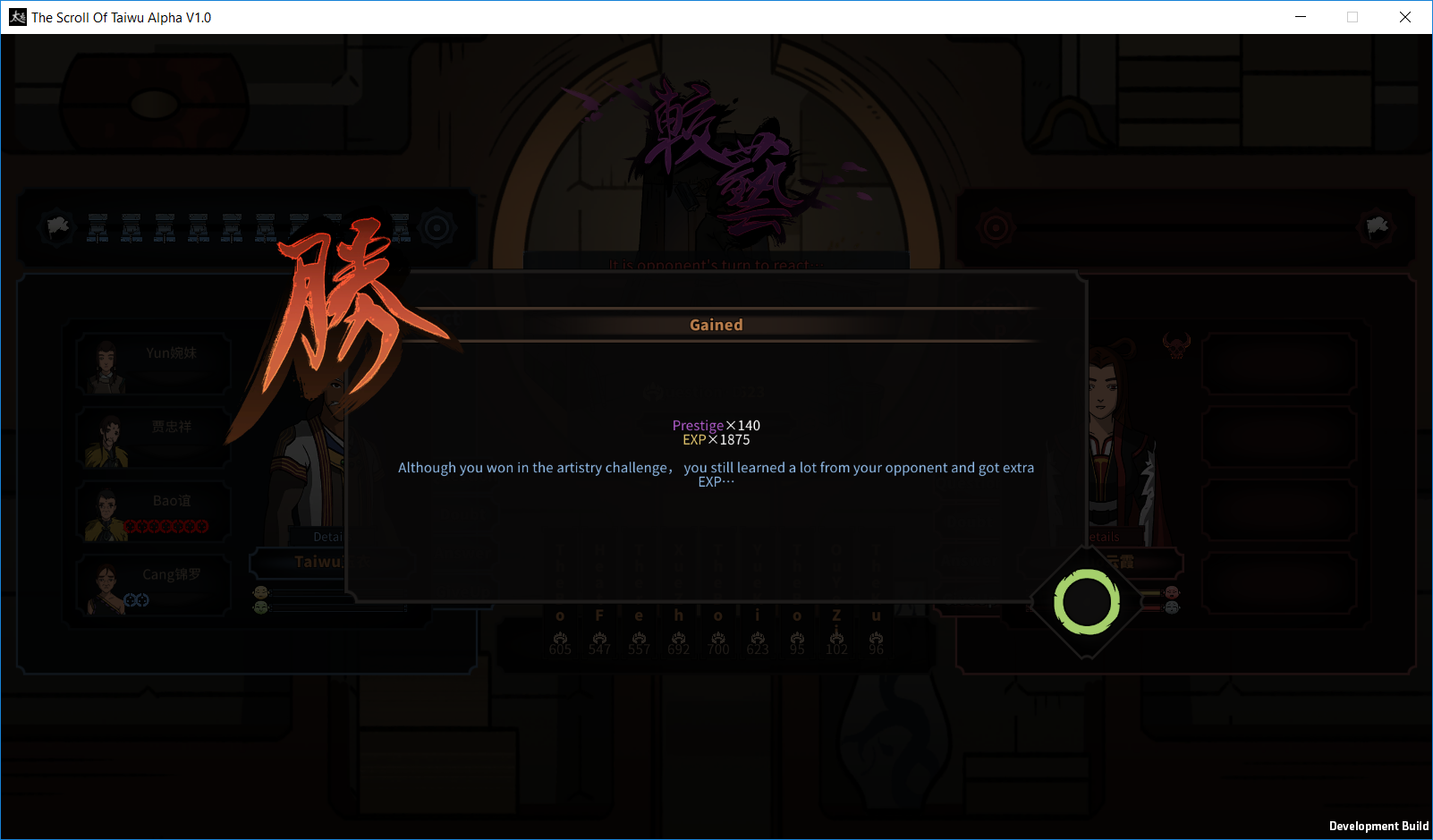Overview
In this guide, I will go through all mechanics relating to art debate
Why and how?
1. When you gather support from an NPC, whose standpoint is kind, they will ask you to defeat them in an art debate, on their best topic.
Because the rank of art you can learn is not limited by world progress, debate can be an easy/cheap way to gain support from high rank NPCs in the early game.
2. It is one way to improve relation with an NPC.
3. If you have art books equipped, and if you win a debate, your reading progress will increase. You can use this to read hard books.
click on the NPC => select interactions => select competition
It requires the target to be “warm (a relationship rank)” with you, and costs 3 action points.
The basics
Players take turn to make a ban.
You reveal a topic anytime using planning points.
Your best 3 topics are automatically revealed, same goes to your opponent.
At the end of the ban, whoever has most planning points left start first.
Each page you read, increase the maximum knowledge score.
Practising increase the actual knowledge score.
The left most book is the T9 (lowest) book of the art, the right most book is the T1 (highest) book of the art.
1. Whoever start first become the first attacker, and can ask a question.
When you ask a question, you can choose a book that has not been discussed before.
You can also choose the difficulty of the question (you knowledge level by default).
You can make a bluff by setting the difficulty higher than your knowledge level.
2. The defender always has the option to doubt, it basically means ask a counter question, it switches the attack and defence.
3. If the defender has higher knowledge than the difficulty of the question, he can answer it, and the attacker lose 1 score.
4. Attackers can keep asking questions unless he gives up, which then loses 3 score.
The winner of each round becomes the attacker of the next round.
Whoever loses all the score points first, loses the debate.
How does NPC make bans?
Like you, NPC has his/her best 3 topics visible, this is based on their talent and attainment.
You can check this by opening his/her information tab.
As you can see, attainment is not always visible.
But we can make an educated guess.
In the example, her music and toxic has the best 2 talent, probably are topics in her best 3.
There are a number of topics at 55 talent, but this girl is from WuDang Sect, who teaches Taoism, so she is likely to have high attainment is Taoism.
So we can reasonably certain, that her best 3 topics are Music, Toxic, Taoism.
And assumes she knows where they are during the ban.
The NPC will always try to keep his/her best topic/topics.
It can be a trap to aim for his/her 4th best topic, by banning his/her top 3.
Because he/she does not know where the 4th best topic is, and could accidentally ban it.
Revealing topics
The first reveal cost 1 planning point, second reveal cost 2, and so on
Blue Circles cancels with Red Circles.
Your teammate provides 1 time of their points
You provide (5 – number of your other teammates) times of your own points
Debate techniques
In general, NPC has similar score on every book.
NPC knowledge score depends on their talent and rank.
Usually you should expect around 500 for T3 (Yellow) characters.
And around 800-900 for T1 (Red) characters.
The player’s status bar (yellow and red) represent different things compared to opponent’s.
By studying the status bar carefully, we can derive a couple of debate techniques.
In short:
You bluff success chance depends on 2 things:
- The question difficulty minus opponent’s knowledge score
Because NPC has similar score on each book, you can test out a rough range for his/her knowledge score
- The length of opponent’s Yellow bar
The shorter the opponent’s Yellow bar, the more likely your bluff will succeed.
- When opponent successfully answers a question
So you can start with a few easy questions
- When you fold
So if your opponent is unlikely to be bluffing, and you plan bluff in the future. Then maybe it is an good idea to skip “doubt”, because “doubt” increases opponent’s yellow bar.
The longer your own red bar, and the shorter your own yellow bar, the more likely your opponent bluffs.
It is hard to decrease your own yellow bar, so
Again by asking easy questions your opponent can answer.





